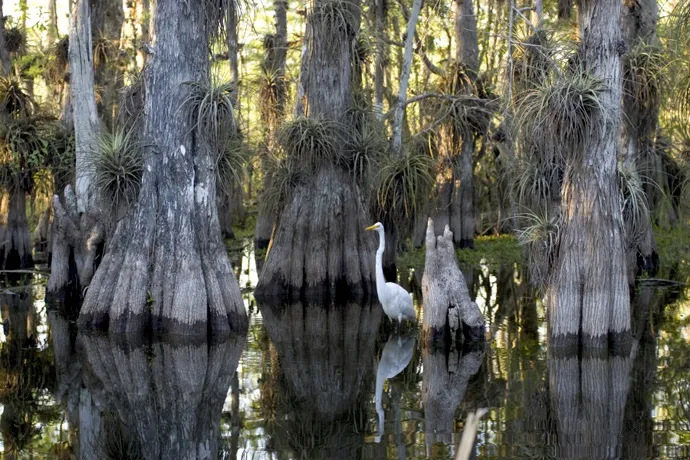Everglades National Park, United States

The Everglades National Park in the United States was inscribed on the World Heritage List in 1979. This site is a unique ecosystem created by a shallow, "imperceptible river" 50 miles wide, flowing slowly south to the tip of Florida. The exceptional variety of aquatic habitats has made it a sanctuary for a large number of birds and threatened species such as American crocodiles (Crocodylus acutus) and Florida manatees (Trichechus manatus latirostris). Pictured here is a great egret (Ardea alba) standing among cypress trees (Taxodium).
Today, over 40 World Heritage sites are listed for their marine values. Together, they can be considered the "Crown Jewels of our Ocean" and are recognized for their outstanding beauty, exceptional biodiversity, or unique ecological, biological, or geological processes. Learn more about this and other marine World Heritage sites.

